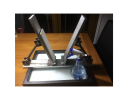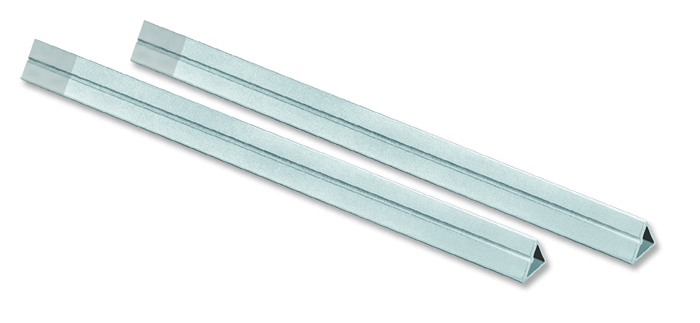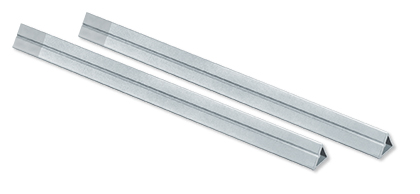-
The BladeForums.com 2024 Traditional Knife is ready to order! See this thread for details: https://www.bladeforums.com/threads/bladeforums-2024-traditional-knife.2003187/
Price is$300$250 ea (shipped within CONUS). If you live outside the US, I will contact you after your order for extra shipping charges.
Order here: https://www.bladeforums.com/help/2024-traditional/ - Order as many as you like, we have plenty.
You are using an out of date browser. It may not display this or other websites correctly.
You should upgrade or use an alternative browser.
You should upgrade or use an alternative browser.
Sharpmaker question
- Thread starter jbib
- Start date
- Joined
- Apr 25, 2007
- Messages
- 3,492
It's a pretty good system, has its limitations but I think they're OK. As has been said, gotta be careful about rounding the tip when sharpening with the corners. The standard stones are good for touch ups, but too fine for doing major edge repair or reprofiling. You can get diamond or CBN rods that are more coarse, but they still won't be super fast. Got a sharpmaker at the beginning of my journey of learning to sharpen, and it was a good tool as long as the knife edges played well with what angles the Sharpmaker offered.
I no longer use a guided system, but I do keep a couple Sharpmaker stones around as they are handy for certain things.
I no longer use a guided system, but I do keep a couple Sharpmaker stones around as they are handy for certain things.
jjg6319
Gold Member
- Joined
- Dec 19, 2011
- Messages
- 963
My progression of sharpening equipment is different than most. I started with a Lanky then an Edge Pro Pro and recently got a Sharpmaker. The Edge would do everything I needed but it takes some time to set up. I had some knives with a slight recurve and I got the Sharpmaker because it was quick to set up and easy. I like it for what it is. It is not super fast and if you are patient it does a good job. It is useful and worth the money and time.
For example Chris Reeves Knives recommends in their instruction to use one to sharpen their knives.
For example Chris Reeves Knives recommends in their instruction to use one to sharpen their knives.
- Joined
- Jul 23, 2015
- Messages
- 17,820
Diamond plate for material removal and creating an edge and point, Sharpmaker for maintenance thereof.
- Joined
- Oct 2, 1998
- Messages
- 46,469
Agree.Diamond plate for material removal and creating an edge and point, Sharpmaker for maintenance thereof.
The Sharpmaker is excellent for both maintenance, and "finishing" after sharpening with more aggressive media. I find it useful to apply a consistent (micro) bevel after freehand sharpening.
(I also have an EdgePro, (and a couple of other inexpensive guided systems), which I very rarely use. I simply prefer the combination of freehand followed by the Sharpmaker...and occasionally stropping...for both speed and convenience.)
I made an oversized V sharpener for reprofiling. One side is steeper, and the settings match the SharpMaker. In use I rotate the jig 180* when switching to alternate bevels. I often finish up on a S/M so I can quickly chase a burr by alternating sides. Only use the apex of the prism for serrated edges.

- Joined
- Apr 12, 2009
- Messages
- 13,476
The edges of the triangular rods can be EXCELLENT for very light touchups on edges that are already at good geometry and nearly sharp. I actually prefer using it this way with just a couple or three passes per side to tune up my edges. The key is to use the lightest touch possible, and not too many strokes. The narrow apex of the rod's edge will focus pressure on your blade's edge, which is why you need to keep the touch extra light. This is also very good for applying a very minimal microbevel, for which I also prefer the Sharpmaker used the same way.
Last edited:
For serrations, the Sharpmaker is about as fast as I’ve found. The only thing is it won’t do repairs. Repairing a serrated blade is like sharpening a saw.
The Sharpmaker is a an excellent finishing and deburring tool. I sharpen on coarser stones at 12 and 17 degrees, then deburr and finish at 15 or 20 degrees on the Sharpmaker. It will produce hair whittling edges with practice and care off the stock white stones and even sharper off the ultra fine white stones. I need to pick up a set of the UF stones. You can rebevel off the corners of the brown stones but I wouldn’t do it again. I did it once, but won’t do it again.
The Sharpmaker is a an excellent finishing and deburring tool. I sharpen on coarser stones at 12 and 17 degrees, then deburr and finish at 15 or 20 degrees on the Sharpmaker. It will produce hair whittling edges with practice and care off the stock white stones and even sharper off the ultra fine white stones. I need to pick up a set of the UF stones. You can rebevel off the corners of the brown stones but I wouldn’t do it again. I did it once, but won’t do it again.
- Joined
- Dec 12, 2007
- Messages
- 2,597
Sometimes fast and good enough is the name of the game. It is fine way to get very sharp edges, however as other mentioned it has a few drawbacks. You will want some other way to reprofile or create a new edge and finishing up or very light touch ups require a very light hand . Overall it is an excellent way to sharpen and maintain your tools, and the speed and convenience is only rivaled by bench stones, considering you have spent the time to learn that particular skill.
I have found a coarse diamond stone or Norton coarse stone works well for rebeveling before going to the Sharpmaker. A medium grit stone in between can be helpful too but isn’t really necessary for most applications.Sometimes fast and good enough is the name of the game. It is fine way to get very sharp edges, however as other mentioned it has a few drawbacks. You will want some other way to reprofile or create a new edge and finishing up or very light touch ups require a very light hand . Overall it is an excellent way to sharpen and maintain your tools, and the speed and convenience is only rivaled by bench stones, considering you have spent the time to learn that particular skill.
I'm (personally) now that big of a fan of that type of system. Easy to round off the tip or introduce a slight recurve over time. My biggest gripe is it doesn't really take away much of the "human" element out of sharpening as it still requires you to maintain the blade perpendicular. If you're training that sort of muscle memory, may as well grab a bench stone and learn how to freehand.
I much prefer systems like the KME where you can almost completely turn off your brain and still get good results. It's what I use to reprofile every new knife I get, after that I maintain frehand and don't really let knives get dull/damaged to the point where I'd need to reprofile again.
I much prefer systems like the KME where you can almost completely turn off your brain and still get good results. It's what I use to reprofile every new knife I get, after that I maintain frehand and don't really let knives get dull/damaged to the point where I'd need to reprofile again.
- Joined
- Oct 8, 2013
- Messages
- 312
That is exactly the way I do it.The Spyderco stones are too fine to rebevel just final edge and touchups.I have found a coarse diamond stone or Norton coarse stone works well for rebeveling before going to the Sharpmaker. A medium grit stone in between can be helpful too but isn’t really necessary for most applications.
- Joined
- Jul 23, 2015
- Messages
- 17,820
I looked into the diamond stones for the Sharpmaker, but someone, I can't remember who, made the point that they are aggressive enough that just the act of inserting them into and removing them from the base was enough to gradually wear the slots to the point that the angle would open up over time. That was part of what caused me to not purchase them.
If you look at the end there's no grit where they fit in the base. Just don't put them in upside down.I looked into the diamond stones for the Sharpmaker, but someone, I can't remember who, made the point that they are aggressive enough that just the act of inserting them into and removing them from the base was enough to gradually wear the slots to the point that the angle would open up over time. That was part of what caused me to not purchase them.
Diamond

CBN

- Joined
- Jul 23, 2015
- Messages
- 17,820
Leave it to Spyderco to think of everything.
Yeah I almost don't want to read their news releases because it's going to cost me.Leave it to Spyderco to think of everything.
- Joined
- Oct 2, 1998
- Messages
- 46,469
The diamond is not present on the bottom of the rods where they insert into the holes.I looked into the diamond stones for the Sharpmaker, but someone, I can't remember who, made the point that they are aggressive enough that just the act of inserting them into and removing them from the base was enough to gradually wear the slots to the point that the angle would open up over time. That was part of what caused me to not purchase them.
- Joined
- Jul 23, 2015
- Messages
- 17,820
The diamond is not present on the bottom of the rods where they insert into the holes.
I didn't know that. Danke42 mentioned it as well and it does sound like the right call, designwise. I wonder if that was always the case, or if it was a CQI?
